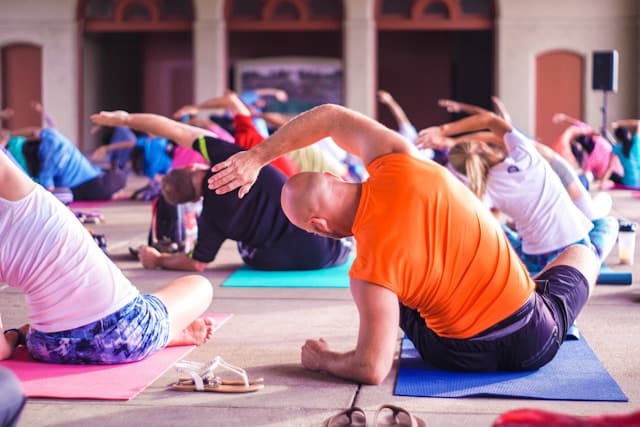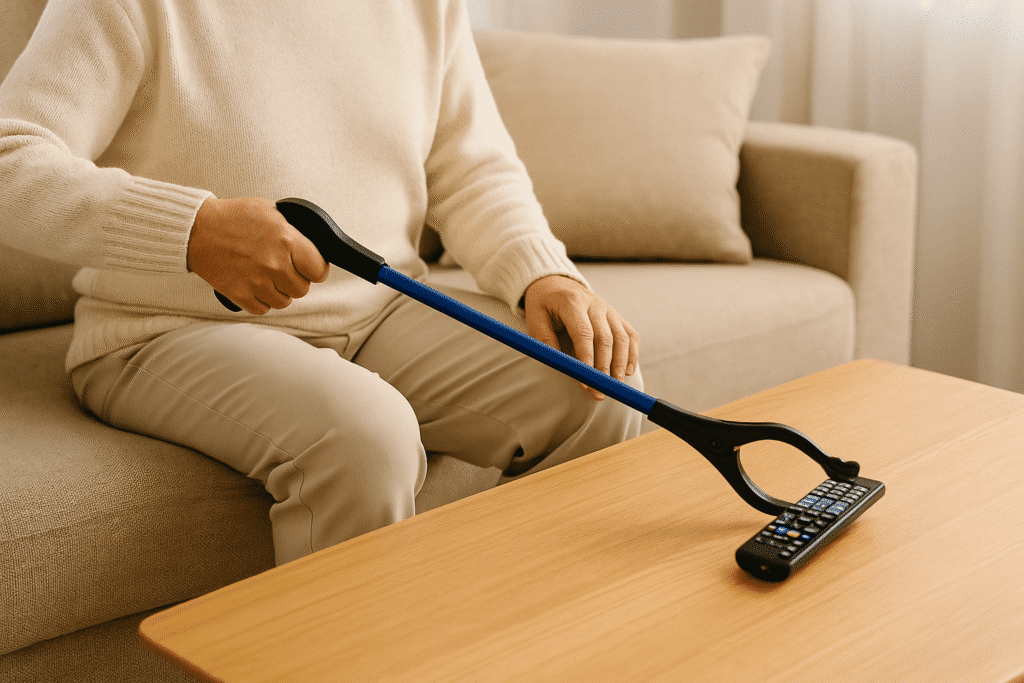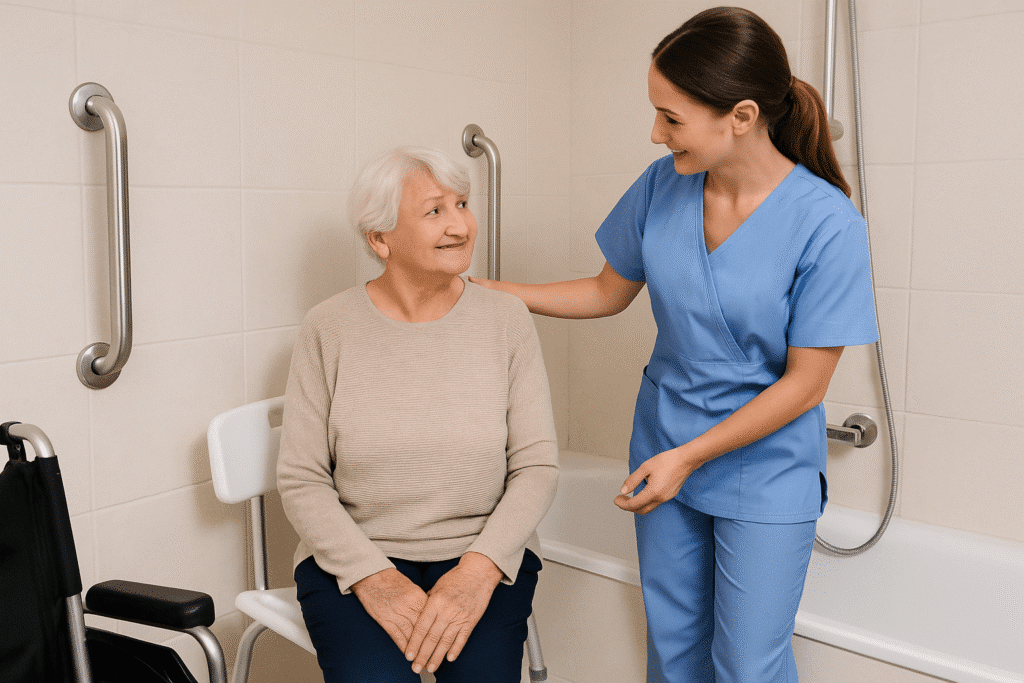Staying active with knee pain can feel like a challenge, but the right exercise makes all the difference.
A recumbent bike is good exercise for seniors with bad knees because it provides a safe, low-impact workout that supports mobility, reduces pain, and keeps joints moving without extra strain.
Read on to learn how recumbent bikes work, why they’re senior-friendly, and the best tips for getting started safely.
Key Summary:
A recumbent bike is an excellent exercise option for seniors with bad knees. Its reclined seat reduces joint strain, while smooth pedaling improves circulation, eases stiffness, and strengthens leg muscles. Safer and more comfortable than upright bikes, it helps seniors stay active and independent with less knee pain.
Is a Recumbent Bike Good Exercise for Seniors with Bad Knees?
Yes, a recumbent bike is one of the best exercise options for seniors with bad knees. Its reclined position and larger seat reduce pressure on the joints, making it easier to cycle without discomfort. This low-impact motion helps improve circulation, strengthen muscles, and keep knees flexible.
Unlike upright bikes or high-impact activities, the recumbent bike spreads weight evenly across the back and hips.
That means less stress on sensitive knees while still providing a solid cardiovascular workout.
Over time, consistent use can improve joint lubrication, ease stiffness, and help maintain independence in daily mobility.
What is a Recumbent Bike?
A recumbent bike is a type of stationary exercise bike with a reclined seat, back support, and pedals positioned in front of the rider instead of underneath. This design makes it more comfortable and easier on the joints compared to a traditional upright bike.
Instead of sitting upright on a narrow saddle, you sit back in a larger chair-style seat with your legs extended forward. The pedals are pushed away from the body, which reduces strain on the knees, hips, and lower back.
This setup provides stability and support, making recumbent bikes especially suitable for seniors or anyone with mobility challenges.
Recumbent bikes are often found in gyms and are also available for home use.
They deliver the same cardiovascular benefits as upright bikes but with added comfort and safety, allowing seniors to exercise consistently without fear of pain or losing balance.
What Makes Recumbent Bikes Senior-Friendly?
A recumbent bike is senior-friendly because it combines comfort, stability, and ease of use in one design. The reclined seat with back support helps seniors stay comfortable during workouts, while the step-through frame makes getting on and off easier.
Key senior-friendly features include:
- Reclined position: Supports posture and reduces lower back strain.
- Wide, cushioned seat: More comfortable than a narrow upright bike saddle.
- Backrest support: Prevents hunching and eases pressure on the spine.
- Stability: Lower center of gravity reduces the risk of tipping or losing balance.
- Accessibility: Step-through design makes mounting and dismounting simple, especially for those with limited mobility.
These features make recumbent bikes easier to use consistently, which is important for seniors looking to stay active without risking pain or falls.
Why Recumbent Bikes Are Good for Bad Knees
Recumbent bikes are particularly helpful for seniors with bad knees because they allow safe, controlled movement without unnecessary joint stress.
Low-impact movement
Cycling on a recumbent bike avoids the pounding impact of walking or running. The smooth pedaling motion strengthens muscles around the knee without aggravating arthritis or old injuries.
Adjustable knee positioning
Most recumbent bikes have adjustable seats. Seniors can set the seat distance so their knees stay slightly bent at full extension, avoiding painful over-stretching.
Promotes joint lubrication
The repetitive cycling motion encourages the production of synovial fluid, which lubricates the knee joint. This helps reduce stiffness and improve range of motion over time.
Pain management and recovery
Gentle cycling is often recommended for people with osteoarthritis or after knee replacement. It helps manage pain by keeping joints active and muscles strong without heavy load-bearing.
Recumbent Bike Benefits for Seniors Beyond the Knees
A recumbent bike doesn’t just help with knee pain; it also supports overall health and independence.
Additional benefits include:
- Improved circulation: Gentle cycling boosts blood flow, which helps heart health and reduces swelling in the legs.
- Stronger muscles: Regular use strengthens the quadriceps, hamstrings, and calves, supporting balance and mobility.
- Better balance and safety: The stable design lowers fall risk, a major concern since falls are the leading cause of senior injuries.
- Weight management: Low-impact cardio helps with healthy weight control, easing pressure on knees and hips.
- Confidence and independence: A safe exercise option encourages seniors to stay active, which supports daily living activities.
Recumbent Bike vs Upright Bike: Which is Better for Bad Knees?
For seniors with bad knees, a recumbent bike is generally better than an upright bike because it places less stress on the joints and offers greater comfort. The reclined position and back support make it easier to exercise without pain or instability.
An upright bike provides a more intense workout for the legs and core, but it requires leaning forward and balancing on a smaller seat.
This can put extra strain on the knees and lower back, making it less suitable for seniors with arthritis or past injuries.
That said, both bikes can improve fitness. Upright bikes may be better for those without joint issues who want a higher-intensity workout, while recumbent bikes are the safer choice for seniors who prioritize comfort, joint health, and stability.
In short, if knee comfort is the main concern, recumbent wins.
Here’s a quick comparison:
| Feature | Recumbent Bike | Upright Bike |
|---|---|---|
| Knee impact | Low, gentle movement reduces joint stress | Moderate to high, more strain on knees |
| Seat comfort | Wide, cushioned seat with back support | Narrow saddle, less comfortable for long use |
| Ease of use | Step-through design, easy to mount/dismount | Requires balance and higher step to mount |
| Workout intensity | Moderate, focused on endurance and comfort | Higher intensity, engages more core muscles |
| Best for | Seniors with arthritis, knee pain, or balance issues | Active adults without joint problems seeking tougher workouts |
Tips for Seniors Using a Recumbent Bike
A few simple habits can make recumbent biking safer and more effective for seniors with knee concerns.
Helpful tips include:
- Start slow: Begin with 5–10 minutes at low resistance and increase gradually.
- Adjust your seat: Keep your knees slightly bent when the pedal is fully extended to avoid over-stretching.
- Check posture: Sit upright with your back supported to reduce strain.
- Listen to your knees: If pain spikes, lower the resistance or shorten the session.
- Stay consistent: Aim for 3–5 sessions a week to build endurance safely.
- Mix it up: Combine cycling with light strength training or stretching for all-around fitness.
When to Avoid or Use With Caution
While a recumbent bike is safe for most seniors, there are situations where caution is necessary. If you have severe knee instability, recent knee surgery, or active swelling, it’s best to wait for medical clearance before starting.
Those with heart conditions, uncontrolled blood pressure, or balance issues should also consult a doctor. Even though recumbent bikes are stable, any exercise program should be adjusted to individual health needs.
The key is to listen to your body. If you feel sharp pain, dizziness, or discomfort beyond normal effort, stop and check in with a healthcare professional.
How to Choose the Right Recumbent Bike for Seniors
Choosing the right recumbent bike ensures comfort, safety, and long-term use.
Step-through design
Look for a frame with a low, step-through entry. This makes it easier to get on and off, especially for seniors with mobility limitations.
Wide, cushioned seat with back support
A supportive seat reduces pressure on the hips and back. Adjustable lumbar support helps prevent strain during longer rides.
Adjustable settings
Seat and pedal adjustments are crucial. They let you set the proper knee extension, which reduces strain and prevents injury. Resistance levels should also be easy to control.
Easy-to-read display and controls
Large, backlit screens are easier on the eyes. Simple buttons help seniors track time, distance, and resistance without confusion.
Safety and stability features
Look for non-slip pedals with straps, sturdy frames, and side handles for extra support. These details make riding safer and more comfortable.
If you want to see our top recommendations in action, check out our full guide on the best recumbent bikes for seniors for detailed reviews and comparisons.
Final Words
A recumbent bike is one of the best exercise options for seniors with bad knees. It offers joint-friendly movement, comfort, and safety while supporting overall health and independence.
Compared to upright bikes, recumbents provide less knee strain and a more stable workout, making them a smart choice for aging adults.
The key is to start slowly, adjust your seat properly, and use the bike consistently. With the right approach, seniors can enjoy exercise without fear of pain or injury.
FAQs
Is a recumbent bike better than walking for bad knees?
Yes, for many seniors with knee pain, a recumbent bike is better than walking. Walking can put repeated stress on the joints, while cycling provides the same cardiovascular benefits with less impact.
How often should seniors use a recumbent bike?
Most experts recommend cycling 3–5 times per week for 20–30 minutes. Seniors should start with shorter, low-resistance sessions and increase gradually based on comfort.
Can recumbent bikes help with arthritis in the knees?
Yes, gentle cycling on a recumbent bike can reduce arthritis pain. The smooth pedaling motion lubricates the joints, strengthens muscles, and helps ease stiffness.
Are recumbent bikes safe after a knee replacement?
In most cases, yes. Doctors often recommend recumbent cycling during recovery because it’s low-impact and controlled. However, seniors should only begin once cleared by their surgeon or physical therapist.
Lauren brings 8+ years of writing experience focused on accessibility, home organization, and senior living. Her practical guides are shaped by conversations with seniors and caregivers, helping readers simplify daily tasks with clarity and confidence.









